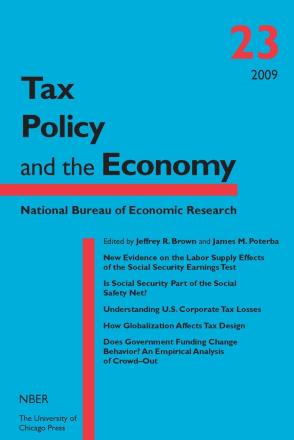New Evidence on the Labor Supply Effects of the Social Security Earnings Test

This paper investigates the impact on labor supply of changes in the Social Security earnings test in 1996 and 2000. We highlight how inertia in labor supply choices influences responses to policy changes. We do this in two ways. First, we show that taking account of last year’s employment status is important in estimating responses to current earnings test changes, a step that has not always been taken in the literature. Second, we test the effect of not only actual but also anticipated earnings test parameters that cohorts faced at earlier ages. This approach demonstrates that past and anticipated future rules influence current employment and earnings. Thus we identify an impact of earnings test changes on employment at ages that are younger than those directly affected and in years that follow the direct change. Finally, we show that earnings test changes that were initiated in 1996 had an effect, in addition to the changes in 2000 that have been recently studied by others. Overall, we predict that the elimination of the earnings test in 2000 raised employment among Health and Retirement Study respondents by around 2 percentage points at ages 66–69 and 3.5 points at age 65, with gains persisting as exposed cohorts aged and also arising at younger ages due to the shock to anticipated earnings test rules.
-
Copy CitationLeora Friedberg and Anthony Webb, Tax Policy and the Economy, Volume 23 (University of Chicago Press, 2009), chap. 1, https://www.nber.org/books-and-chapters/tax-policy-and-economy-volume-23/new-evidence-labor-supply-effects-social-security-earnings-test.Download Citation


